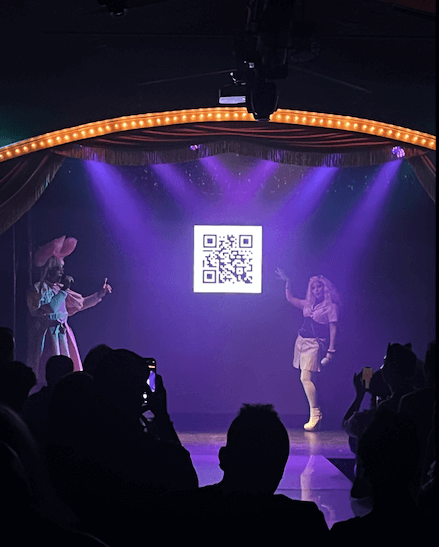10 things a drag show can teach us about fundraising
Marina Jones, Deputy Development Director at English National Opera has just returned from a supporter trip, taking donors to the opera in San Francisco. On a night off during the trip she went to a drag show. In this guest blog she shares some reflections on what a drag show can teach fundraisers.
1 - Don't be afraid to ask
When the show starts the first thing the hosts of the show ask is ‘What’s the first rule of drag?’
The answer – “Tip your artists, dancers, servers and hosts”.
This ‘pre’-suasion or priming is setting the scene right from the start, and for the rest of the night – you will be asked to contribute.
Giving is expected, normal, encouraged and celebrated. The message is, if you care about the art form and want to enjoy it you need to be part of funding it and making it happen. Your support has a direct impact on the work you see on stage. Donors want to see the impact of their gift – seeing the impact live on stage makes it immediate.
Often in the arts we can shy away from articulating the ‘art for arts sake’ or for the pure enjoyment but a drag show connects immediately and says to you ‘if you want this it costs money and you need to give to make it happen’. Sometimes fundraisers also delay asking, missing out on the opportunity when people are feeling and experiencing all the emotions of connecting with our art forms.
At a drag show, there is no fear of asking and making it clear that funds are needed.

2 - Make it easy
Now, a bit of background if it’s a while since you went to drag show or have yet to go … Tipping your artists involves putting dollar bills into whatever their fabulous outfits they are wearing.
If there are barriers to giving people won’t do it – it needs to be easy and friction free. If there are obstacles to making the gift it creates friction. Overcoming this friction uses too much brain power so we don’t do it. Your brain moves from the intuitive and automatic system one to system two and your rational brain kicks in and stops you completing the action.
So make it easy to give – anticipate the friction points and barriers that your donors have in that giving journey. Have they got what they need to donate? For example, at the drag show you need a dollar bill to tip but you only have a $20. No problem – they have thought of that! The hosts come out and offer change – so you can change that $20 for twenty $1 dollar bills so you can easily make your contributions directly to the artists.
By thinking about what your donors need you are helping them give by making it easy for them.

3 - Encourage repeat gifts
An additional bonus of having lots of dollar bills is that it makes it easy to make repeat gifts to a preferred artist or many artists.
4 - Giving makes us happy
Each time you give a gift your brain gets a hit of the happy chemicals (dopamine, oxytocin, serotonin and endorphins). By making it easy and encouraging more gifts you are making people happier.
5 - Make it a social norm
We are motivated to do what others are doing. Repeatedly seeing people make donations establishes giving as socially normal and encourages others to participate.
6 - Make it joyful and celebrate contributions
Every time a note is given the crowd cheers and celebrates the donation. Each contribution is celebrated. Celebrate that your donors are choosing to voluntarily give you to you to make the world better.
7 - Adapt to technology
In an increasingly cashless society the lack of cash should not be a barrier to being able to contribute. So adapt – even drag queens use QR codes!
8 - Give people different options for donating
As well as giving directly to the artist or by QR code there is also a collection bucket. This means you can give whatever way makes you feel comfortable. Whether you choose to give publicly or more privately, all gifts are cheered!
9 - Repeat the ask
Don’t shy away from asking again and again and reiterating your need for support. There are repeated asks throughout the show. The audience have been primed with the need for support and that they will be asked from the first moment the hosts walked out onto stage. Keep asking – you need the money.

10 - Build up your community of supporters
You have an audience who care about your art form and what you are doing. It is part of their identity. Celebrate it, celebrate them and give them the opportunity to celebrate their identity.
Remember – people want to give!
Thanks to Marina for sharing these tips with us!
If you’ve got a blog, tips or suggestions you want to share with arts and culture fundraisers please get in touch with David by emailing David.Burgess@ApolloFundraising.com
